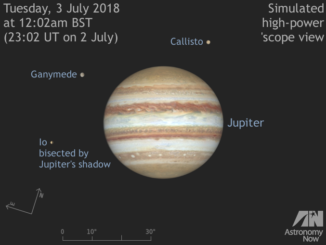
Observing


See ringed planet Saturn at its best in late June
While excitement among planetary observers is growing for the best views of Mars for 15 years (Martian dust storms permitting) in late July, there’s still one prior planetary treat: the opposition of Saturn on 27 June, which coincides with a close lunar conjunction. We show you what to look for in and around the Saturnian system.

Let Saturn be your guide to finding asteroid Vesta at its brightest
Many of you may have tracked down an asteroid with binoculars or a telescope, but have you ever seen one with the naked eye? If not, then June presents you with an opportunity to see the brightest, 4 Vesta, at a close opposition. What’s more, ringed planet Saturn lies close by to act as a convenient guide.
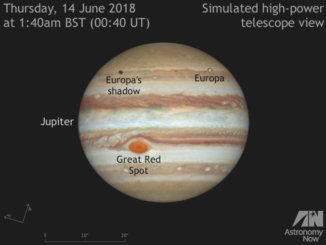
June’s Jupiter events visible from the UK
Jupiter has passed opposition, but the solar system’s largest planet is still putting on a magnificent show in the southern sky at dusk. Backyard telescopes readily reveal its Great Red Spot storm feature and four main moons constantly playing tag. Here’s our full guide to Jovian events visible from the UK in June.
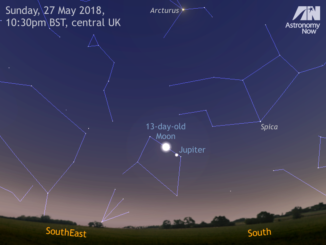
See the Moon get close to Jupiter and a double star at dusk on 27 May
Skywatchers in Western Europe looking at the rising 13-day-old gibbous Moon in the south-southeast at dusk on Sunday, 27 May can also see prime-time Jupiter within the same binocular field of view. But look closer in the vicinity of the solar system’s largest planet and you’ll see an easily resolved double star – alpha Librae.
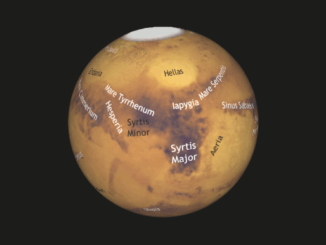
Get ready for viewing Mars this summer during its closest approach for 15 years
At the end of July 2018, Mars makes its closest approach to Earth since the memorable opposition of 2003. This summer sees the Red Planet big and bright, low in the south around 1am BST, but now’s the time to train your eye to detect prominent Martian surface features – dust storms permitting! We present our interactive Mars Mapper to help plan your observations.
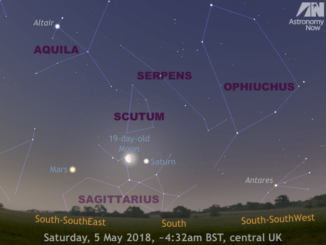
See the Moon get close to Saturn and Mars in the early morning sky
Although Jupiter close to opposition may be stealing the other naked-eye planets’ thunder, there’s lots more to see if you’re an early riser on the weekend of 5–6 May. About an hour before sunrise finds Mars and Saturn less than the span of an outstretched hand at arm’s length apart in the UK southern sky, with the waning gibbous Moon acting as a convenient guide to each planet on successive mornings.
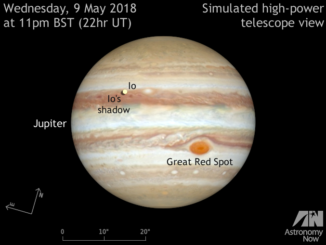
Jupiter’s 9 May opposition and a month of Jovian events visible from the UK
With the opposition of Jupiter occurring on 9 May, now is the time to ensure that your telescope is clean and collimated (aligned) to deliver the sharpest images of the solar system’s largest planet at its best. We tell you when and how to view Jupiter’s Great Red Spot and a wealth of Galilean moon phenomena throughout May 2018.
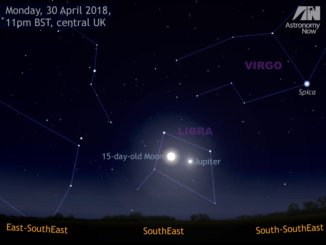
See the Moon get close to prime-time Jupiter on 30 April
Observers in Western Europe looking at the rising full Moon low in the southeast on the night of Monday, 30 April will also see conspicuous planet Jupiter close by, the pair fitting comfortably within the field of view of typical binoculars. Jupiter is close to opposition (9 May) and we show you how to identify its four main moons.
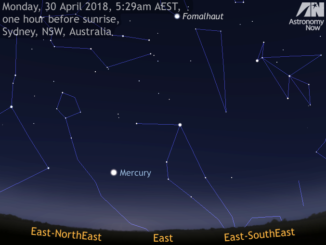
See Mercury’s very favourable dawn display under southern skies
Have you ever seen the closest planet to the Sun? If you wish to tick Mercury off your To-See list, particularly if you live in the Southern Hemisphere, now until the middle of May is the time to be scrutinising the eastern sky about an hour before sunrise. Mercury also has a close encounter with an old crescent Moon on 14 May.
